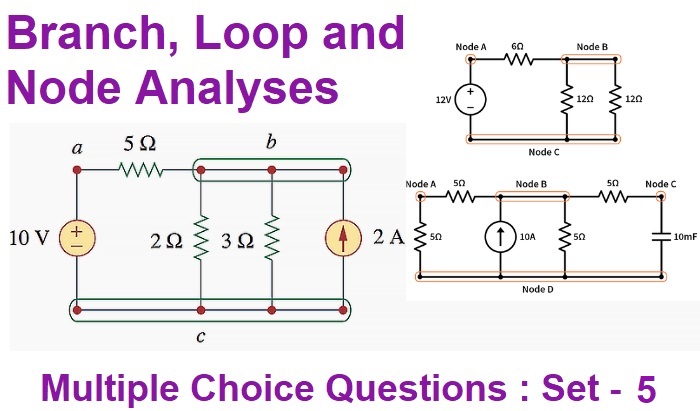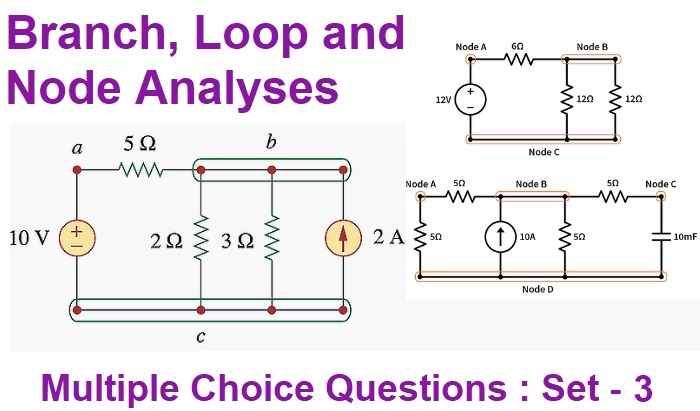Nodal Analysis With Sources
Nodal Analysis With Sources
The node-equation method is based directly on Kirchhoff’s current law unlike loop-current method which is based on Kirchhoff’s voltage law. However, like loop current method, nodal method also has the advantage that a minimum number of equations need be written to determine the unknown quantities. Moreover, it is particularly suited for networks having many parallel circuits with common ground connected such as
electronic circuits.
For the application of this method, every junction in the network where three or more branches meet is regarded a node. One of these is regarded as the reference node or datum node or zero-potential node.
Hence the number of simultaneous equations to be solved becomes (n − 1) where n is the number of independent nodes. These node equations often become simplified if all voltage sources are converted into current sources
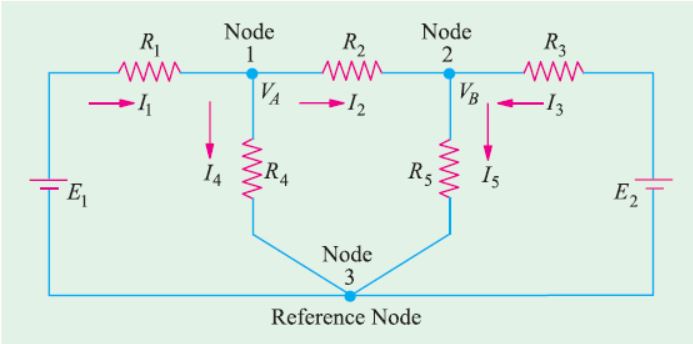
Nodal Analysis With Sources
(i) First Case
Consider the circuit of Figure given above, which has three nodes. One of these i.e. node 3 has been taken in as the reference node. VA represents the potential of node 1 with reference to the datum node 3. Similarly, VB is the potential difference between node 2 and node 3. Let the current directions which have been chosen arbitrary be as shown.
For node 1, the following current equation can be written with the help of Kirchhoff’s Current Law.
I1 = I4 + I2
Now I1R1 = E1 − VA
∴ I1 = (E1 − VA)/R1 ……………………………(i)
Obviously, I4 = VA/R4
Also, I2R2 = VA − VB (ä VA > VB)
∴ I2 = (VA − VB)/R2
Substituting these values in Eq. (i) above, we get,
 …………………..(ii)
…………………..(ii)
Simplifying the above, we have
 …………………..(iii)
…………………..(iii)
The current equation for node 2 is I5 = I2 + I3
 …………………..(iv)
…………………..(iv)
OR
 …………………..(v)
…………………..(v)
Though the above nodal equations (ii) and (iii) seem to be complicated, they employ a very simple and systematic arrangement of terms which can be written simply by inspection. Eq. (ii) at node 1 is represented by Figure given above.
1. The product of node potential VA and (1/R1 + 1/R2 + 1/R4) i.e. the sum of the reciprocals of the branch resistance connected to this node.
2. Minus the ratio of adjacent potential VB and the interconnecting resistance R2.
3. Minus ratio of adjacent battery (or generator) voltage E1 and interconnecting resistance R1.
4. All the above set to zero. Same is the case with Eq. (iii) which applies to node 2.
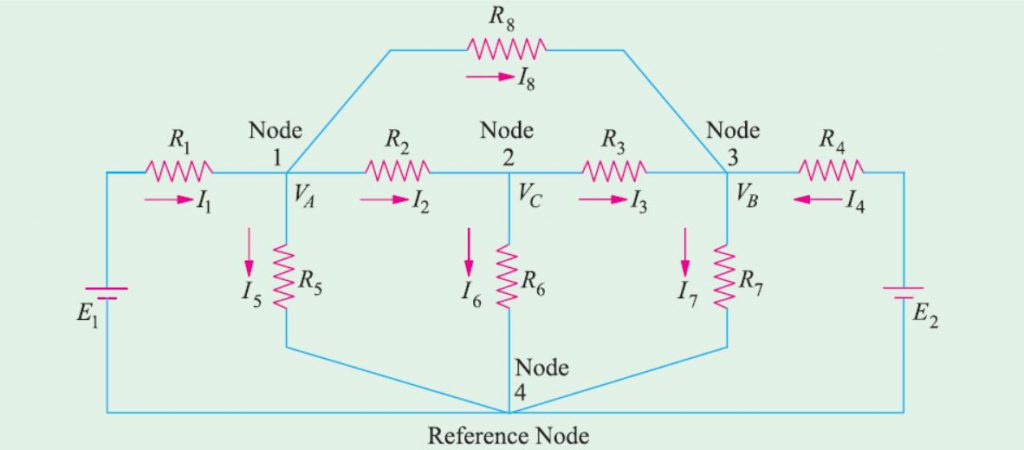
Using conductance instead of resistances, the above two equations may be written as
VA (G1 + G2 + G4) − VBG2 − E1G1 = 0 ……………………….(iv)
VB (G2 + G3 + G5) − VAG2 − E2G3 = 0 ……………………….(v)
To emphasize the procedure given above, consider the circuit of Figure given above.
The three node equations are

After finding different node voltages, various currents can be calculated by using Ohm’s law.
(ii) Second Case
Now, consider the case when a third battery of e.m.f. E3 is connected between nodes 1 and 2 as shown in Figure given below.
It must be noted that as we travel from node 1 to node 2, we go from the −ve terminal of E3 to its +ve terminal. Hence, according to the sign convention given in Article – Determination of voltage sign, E3 must be taken as positive. However, if we travel from node 2 to node
1, we go from the +ve to the −ve terminal of E3. Hence, when viewed from node 2, E3 is taken negative.
For node 1
I1 − I4 − I2 = 0 or I1 = I4 + I1 − as per Kirchhoff’s Current Law
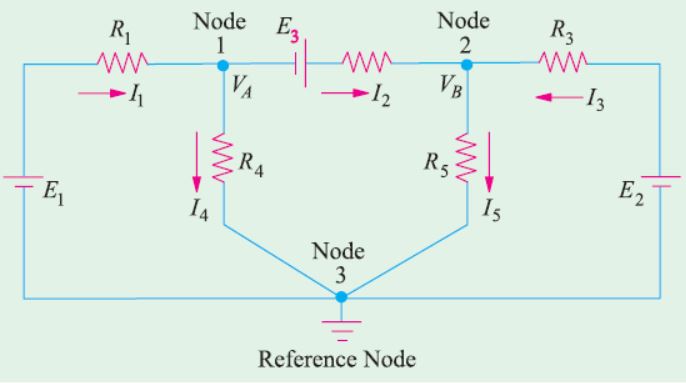

It is exactly the same expression as given under the First Case discussed above except for the additional term involving E3. This additional term is taken as +E3/R2 (and not as − E3/R2) because this third battery is so connected that when viewed from mode 1, it represents a rise in voltage. Had it been connected the other way around, the additional term would have been taken as −E3/R2.
For node 2
I2 + I3 − I5 = 0
or I2 + I3 = I5 − as per KCL

As seen, the additional terms is −E3/R2 (and not + E3/R2) because as viewed from this node, E3 represents a fall in potential.
It is worth repeating that the additional term in the above Eq. (i) and (ii) can be either +E3/R2 or −E3/R2 depending on whether it represents a rise or fall of potential when viewed from the node under consideration
Read article –Determination of voltage sign
Visit NCERTplanet.com for NCERT solutions and Textbook downloads

